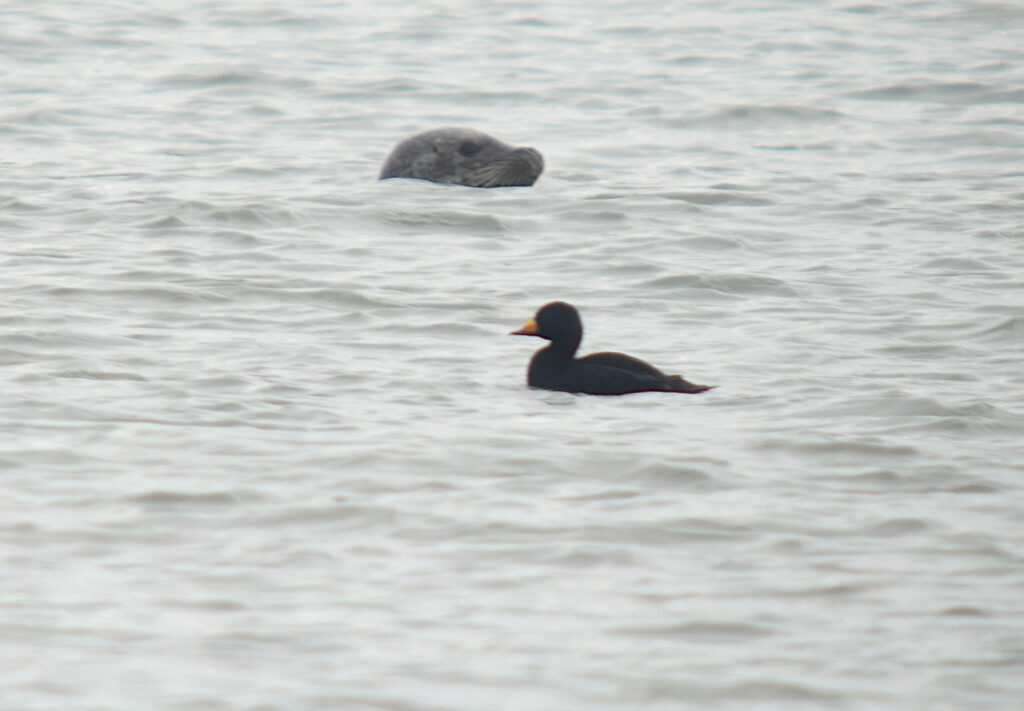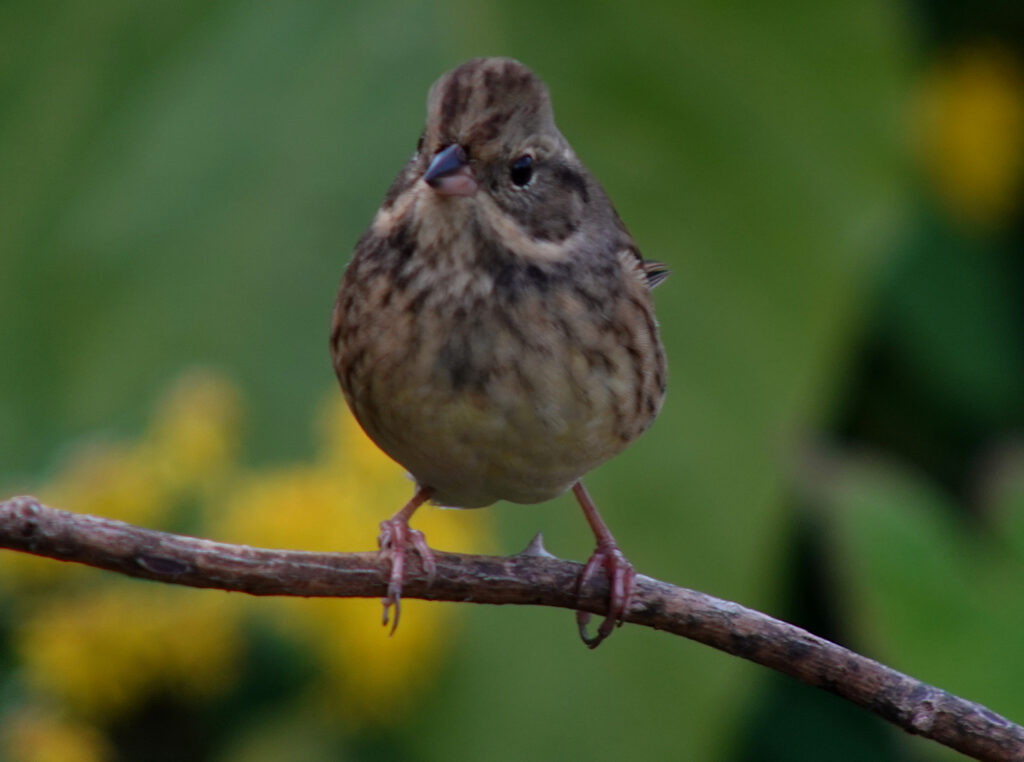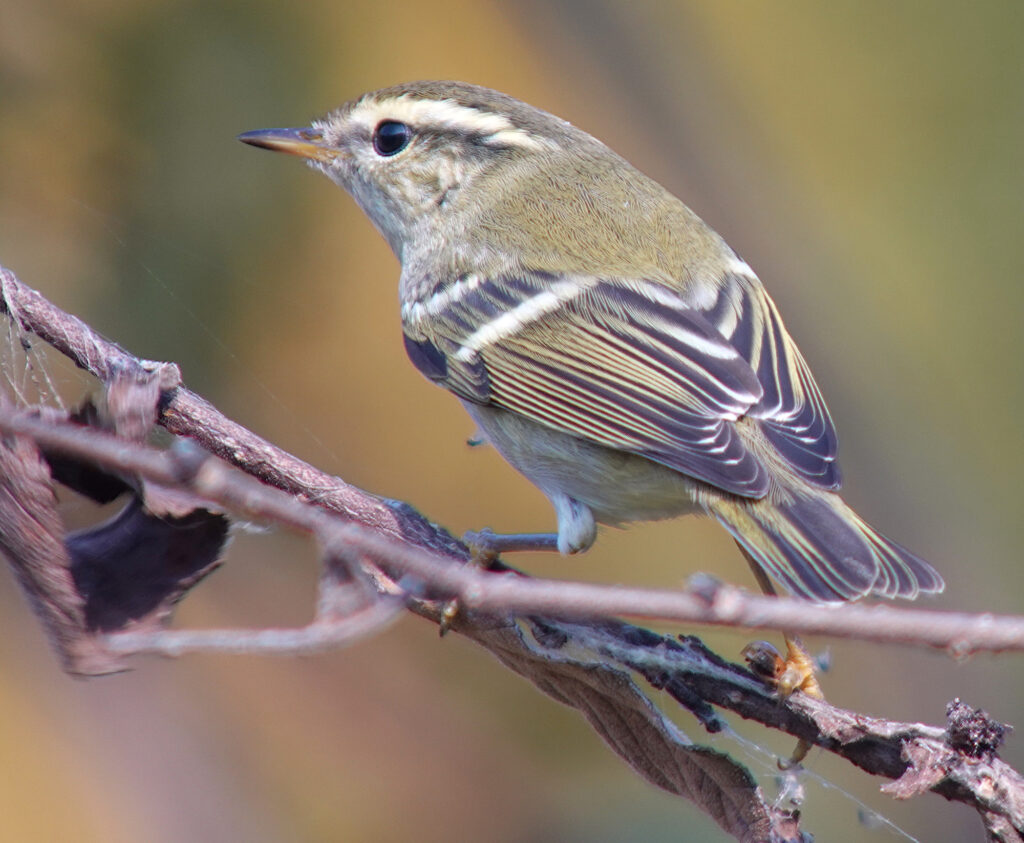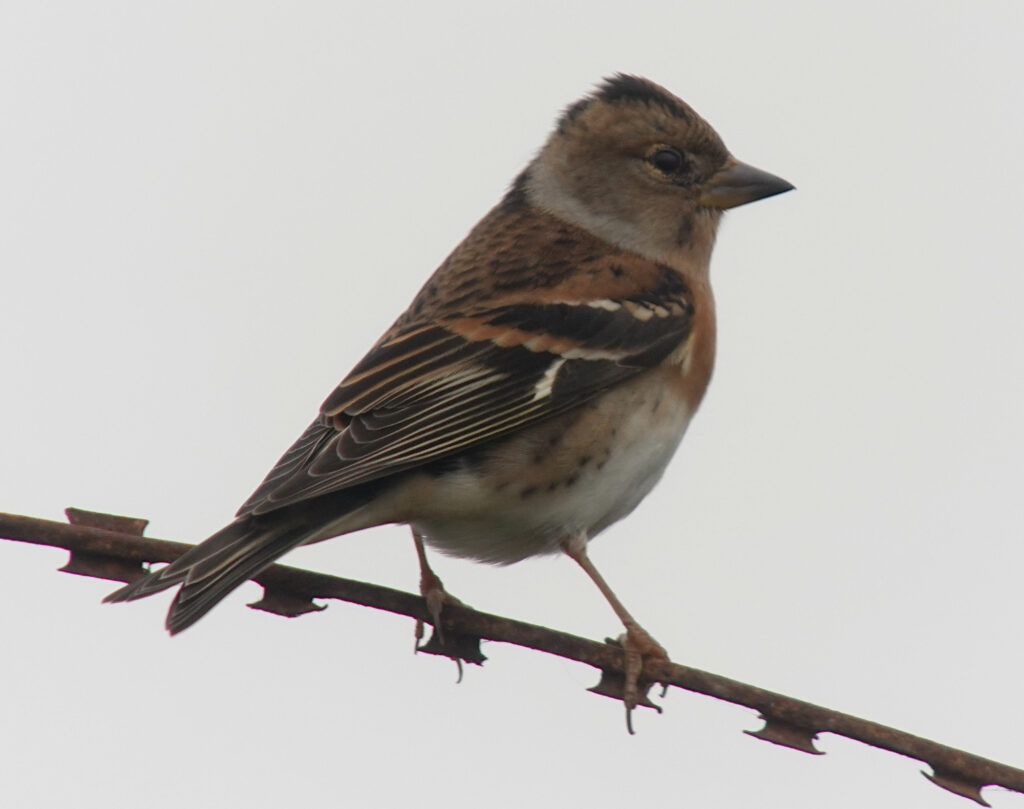Nial Moores, Birds Korea, October 31st 2023.
All images copyright of Nial Moores and Birds Korea.
A total of 143 species were logged during this survey visit, with the outstanding highlight a Blyth’s Reed Warbler present from 22nd to at least 26th. After this survey, the number of bird species recorded on this island since 2013 now stands at 387.
Selected highlights by day follow.
On October 18th, following a very unproductive ferry journey, a walk around the northeast found 58 species. Species of note included ten Black (American) Scoter and 58 Stejneger’s Scoter, decent numbers of finches, and at least 110 Coal Tit, hinting at a potentially large movement of the species.


Full checklist on eBird here.
On 19th, the whole day was spent in the northeast, with prolonged long “sits” counting raptors and visible migrants. Highlights included at least 300 Coal Tit moving west, two Greater Spotted Eagle (one juvenile and one adult) and soon after a much trickier individual, identified (tentatively?) as a sub-adult Steppe Eagle, on the basis of the bird’s rather bulkier look, with larger head and bill, seven visible primary fingers, and plumage details, which included a lack of white underwing comma, and presence of a paler tail, and white on the upperwing (along the upperwing coverts and on the primary bases).


Full checklist for the day on eBird here.
On 20th, another Greater Spotted Eagle was watched moving rapidly west from the bus-stop, but the southwest of the island was rather bird-poor with only 45 species logged, including a tardy Asian Brown Flycatcher and a timely Taiga Flycatcher and only small numbers of buntings (including the Black-faced Bunting below) and finches.

See the full checklist on eBird here.
Rain showers overnight gave way to increasingly windy conditions on the 21st. Survey was limited to the centre of the island, starting with the sea off from the main sluice gate, and then coverage of the reclamation lake, Hwadong wetlands and rice-fields just north of the lake. In all, 65 species were logged, with rarest in the Korean context an adult Brant Goose (third or fourth record in the past 3 years) and rarest in the Baengnyeong context a single Red-necked Grebe – a first island record – both on the sea.

Additional records of special note included 16 Red Crossbill (following on shortly after a small flock was reported from Jeju) hinting at a potential irruption, and single Upland Buzzard and Merlin.
See the full checklist on eBird here.
On 22nd, calm conditions at dawn facilitated the discovery of first a Red-breasted Flycatcher and soon after Korea’s second Blyth’s Reed Warbler in Jinchon (see full account on the identification here), followed by a substantial movement of raptors. As winds started to increase from the southwest, creating headwinds for birds moving off island, survey of the southwest corner seemed advisable. There, another suspected Red-breasted Flycatcher was heard (but too briefly to confirm); and additional highlights included at least 300 Coal Tits, 30 Red Crossbill, at least 110 Yellow-browed Warblers (a rather high count for late October) and decent numbers of raptors, with a Short-eared Owl also watched soaring (above 500masl).


See the full eBird Checklists here and here.
On 23rd, 106 species were logged during survey in the northeast, southwest and in the central wetlands area. In addition to the Blyth’s Reed Warbler and Brant Goose still being present, highlights included about 1600 Coal Tit logged during the day (including 720 counted moving back west at one count point in 90 minutes); high numbers of raptors (including a stunning male Amur Falcon in the northeast and 48 Northern Goshawk in the southwest in only 3 hours); and good numbers of geese, including one Swan Goose. While separation of Taiga Bean Goose from Tundra Bean Goose is easy in the southeast of Korea, identification is much more of a challenge on Baengnyeong and along parts of the west coast, presumably as these are geese that are wintering primarily in China.



The day also included highest day counts of this research visit of both white-headed Long-tailed Tit and of Chestnut-flanked White-eye.



On 24th, I only managed a couple of hours in the field due to desk work. Numbers and diversity seemed rather low, with only 41 species logged from a regular watch-point, including the Blyth’s Reed Warbler still, decent numbers of finches (including 65 Hawfinch and the personal first Japanese Grosbeak of the season) and of Dusky Thrush (90) with the first two Naumann’s Thrush of the visit.

See the full checklist on eBird here.
In SSE winds on the 25th, the only survey was of Dumujin in the northwest. Although apparently rather quiet, notable species found in 45 minutes along a 500m stretch of forest edge included first a “Siberian” Chiffchaff, then a calling Hume’s Leaf Warbler and then two calling Red-breasted Flycatchers together!



See the full checklist on eBird here.
Due to work commitments, I needed to leave the island at lunchtime on the 26th, ahead of a potentially interesting weather system. Several hours in the field in the northeast found a respectable 57 species, including the Blyth’s Reed Warbler still, a decent number and diversity of buntings (finally…) and at least 1100 Brambling.




